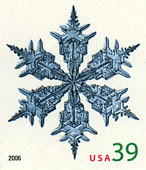
| James S. Aber |
| Glacial sediment | Glacial till |
| Depositional landforms | Drumlins |
| Related sites | References |

| James S. Aber |
| Glacial sediment | Glacial till |
| Depositional landforms | Drumlins |
| Related sites | References |
Glacial sediment can be divided in two general categories: till and stratified sediment. Till is defined as "... a sediment that has been transported and is subsequently deposited by or from glacier ice, with little or no sorting by water" (Dreimanis and Lundqvist 1984, p. 9). It is material that was released from glacier ice usually by melting and was deposited without significant transportation or sorting due to water or gravity movements.
Ground moraine is deposited as a nearly flat plain beneath an ice
sheet; whereas various types of moraine ridges or hills build up in
ice-margin positions. The latter category includes: end, lateral,
interlobate, ribbed, and hummocky moraine. These moraines and other glacial
landforms are nicely illustrated on the Glacial Map of Canada
(Prest et al. 1967).
Depositional landforms
Landforms of glacial deposition are many and varied, including several
kinds of moraines. This term is a French word that originally
referred to rubbly piles of debris in front of alpine glaciers. It is now
used in many different contexts referring to constructional landforms
(American) or deposits (European). Moraines may be composed of diamicton
and/or stratified sediment.Drumlins
Drumlins are among the most distinctive glacial
landforms. Drumlins are streamlined hills ideally having the shape of a
teardrop or inverted spoon. They occur in fields
containing dozens or hundreds to thousands of individual drumlins. They
are arranged en echelon in broad belts or arcs behind conspicuous
ice-margin positions, and the pattern of drumlins is thought to indicate
ice flow directions.

Aerial view of classic drumlins in east-central Wisconsin. Elongated,
streamlined hills with blunt upice ends. Ice movement from left to right.
© JLM Visuals (134/07).
 Related sites
Related sites

 Glossary or
references.
Glossary or
references.
Return to Glacial geomorphology (2020).
All images and text © J.S. Aber.